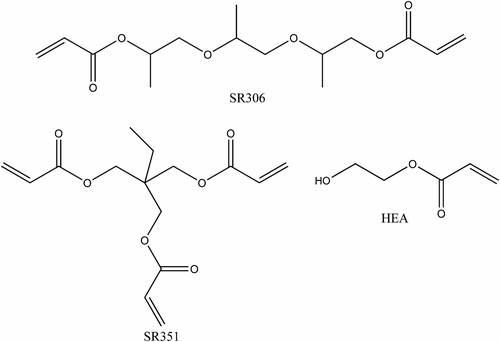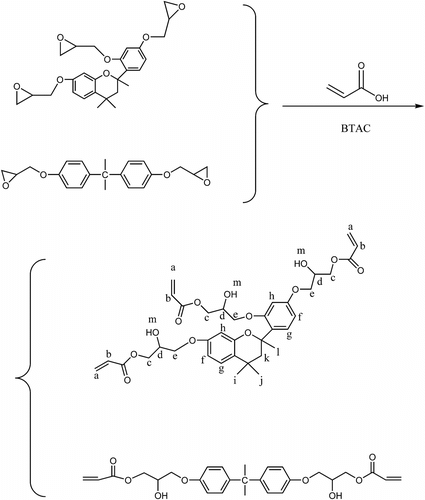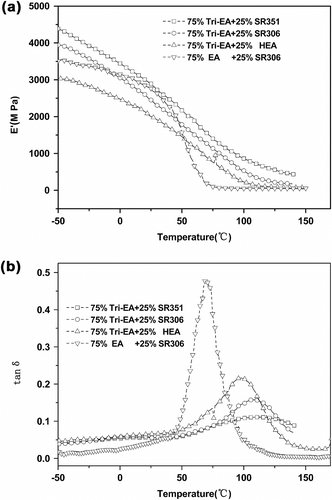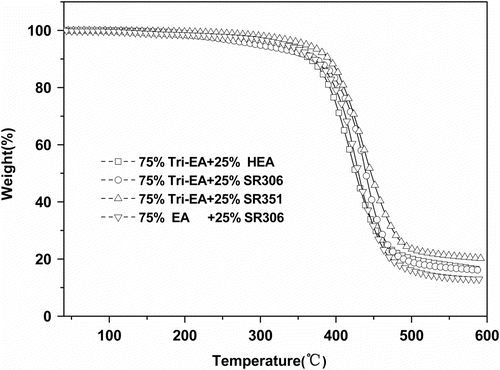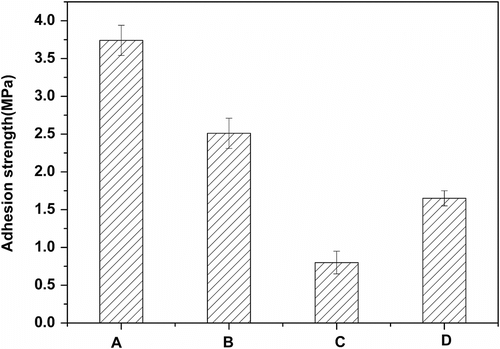Figures & data
Table 1. Properties of cured films.
Figure 1 Effect of photoinitiator concentration on photopolymerization of 75%Tri-EA + 25% SR306. Inset: R p plots (I = 25 mW/cm2).
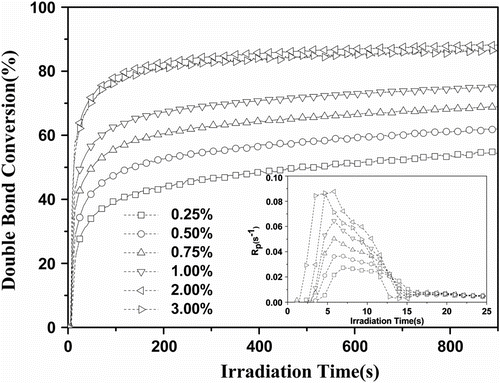
Figure 2 Effect of different photoinitiators on the photopolymerization of 75%Tri-EA + 25% SR306. Inset: R p plots (I = 25 mW/cm2).
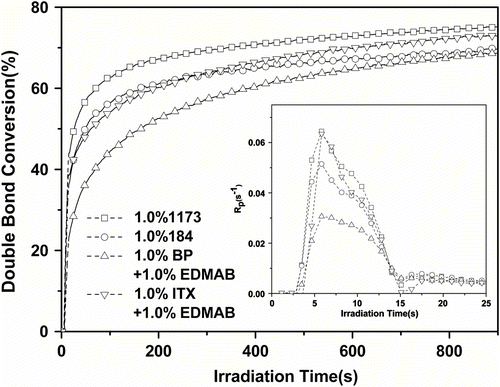
Figure 3 Effect of the light intensity on the photopolymerization of 75%Tri-EA + 25% SR306. Inset: linear regressions with R = 0.974 (1173 = 1.0%).
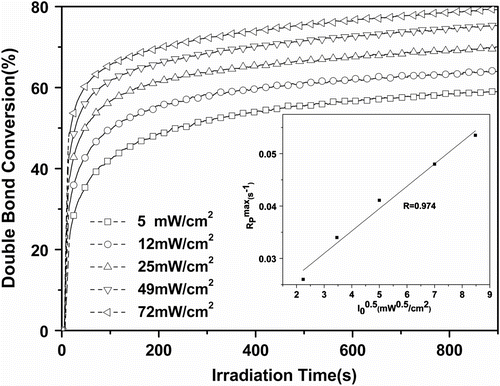
Figure 4 Conversion vs. irradiation time plot for Tri-EA with different functional reactive diluents. Inset: plots (1173 = 1.0%, I = 25 mW/cm2).
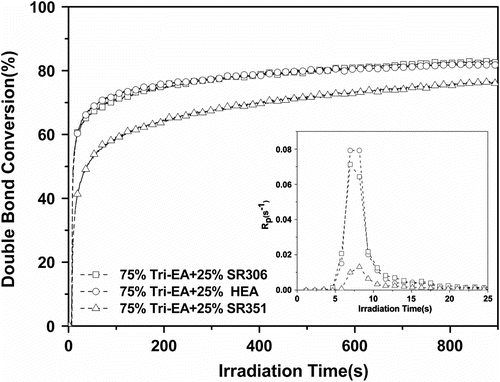
Figure 5 Comparison of polymerization conversion rate for Tri-EA/SR306 and EA/SR 306. Inset: R p plots (1173 = 1.0%, I = 25 mW/cm2).

